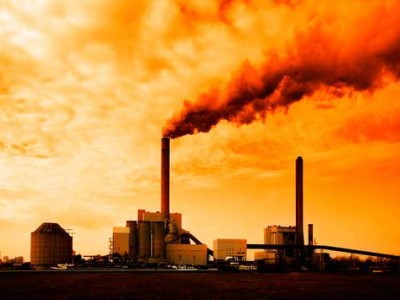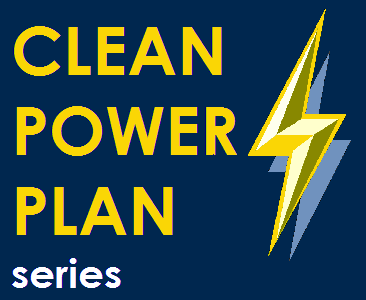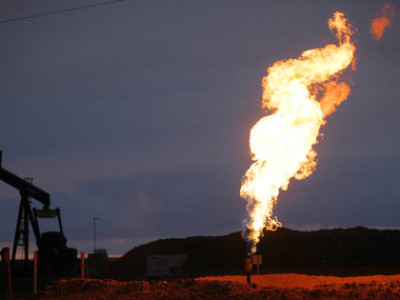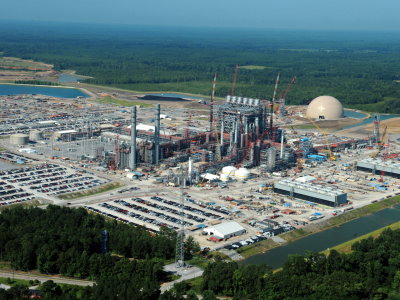Air Quality
Guest Blogger Kate Konschnik: The Debate about EPA’s Authority to Regulate Carbon Pollution is a Lot of Things – But Not These Things
Kate Konschnik is the Director of Harvard Law School’s Environmental Policy Initiative. The views expressed in this blog post are her own.
Clean Power Plan challengers have asked the D.C. Circuit to stay the rule pending litigation. Today, industry and environmental groups supporting EPA will file their oppositions to this request. The stay motions included the charge that EPA may not use Section 111(d) at all to curb pollution from existing power plants. Dan Farber and I …
CONTINUE READING“Necessary and Appropriate”
EPA has now formally proposed its response to the Supreme Court’s opinion in Michigan v. EPA
Although the Paris talks are justifiably getting the lion’s share of the attention, there have been other significant environmental actions recently. One of those involves the EPA’s effort to reduce toxic emissions from power plants (particularly coal-fired plants). The Clean Air Act gives special treatment to toxic emissions from power plants. Other sources are regulated …
Continue reading ““Necessary and Appropriate””
CONTINUE READINGClean Power Plan Litigation Kick-Off
Flood of lawsuits follows publication of EPA rules to regulate power-plant GHGs
*Updated: Nov. 17, 2015* On Friday, October 23, 2015, the Federal Register formally published EPA’s rules to control greenhouse-gas emissions from fossil-fuel-fired power plants under the Clean Air Act. I described the basics of the rules after EPA released the unofficial text in August. The final text of the rule to regulate new and modified …
Continue reading “Clean Power Plan Litigation Kick-Off”
CONTINUE READINGAir quality and wildfire
We may need to burn more to get less smoke
One of the impacts of California’s difficult fire season has been air pollution. Fires produce smoke. Large wildfires produce a lot of smoke. And large wildfires in the southern Sierra Nevada produce smoke in the southern Central Valley – the part of the United States that already has some of the worst air quality in …
Continue reading “Air quality and wildfire”
CONTINUE READINGGaping Hole in EPA’s Methane Rules
Why don’t EPA’s proposed rules to reduce methane emissions apply to existing oil and gas facilities?
In August, EPA released proposed rules to reduce fugitive methane and VOC emissions from oil and gas operations. While this is a significant action in the fight against climate change, and much needed in light of the shale-driven national drilling renaissance, there is a gaping hole in the methane rules that has environmentalists worried — …
Continue reading “Gaping Hole in EPA’s Methane Rules”
CONTINUE READINGLost in the Ozone Again
The Ozone Standard, Regulatory Pragmatism, and the Rule of Law
EPA issued a new regulation last week that mandates a reduction in ozone levels to 70 ppm from the current 75 ppm (originally set by the Bush Administration). The new regulation was immediately attacked by industry and environmentalists. According to industry, the regulation will be a job-killing burden on the economy. According to environmentalists, …
Continue reading “Lost in the Ozone Again”
CONTINUE READINGExploring Potential Challenges to EPA’s New Source Performance Standard: PART III
CCS for coal power plants, but not natural-gas power plants?
This post is the third in a mini-series (see first and second posts) exploring likely legal challenges to the New Source Performance Standard (NSPS) for power-plant greenhouse gas emissions under Clean Air Act § 111(b), and how those challenges might affect the Clean Power Plan. In my first post on EPA’s New Source Performance Standard …
Continue reading “Exploring Potential Challenges to EPA’s New Source Performance Standard: PART III”
CONTINUE READINGIs CCS the “best” system of emission reduction for coal-fired power plants?
Exploring Potential Challenges to EPA’s New Source Performance Standard: PART II
This post is the second in a mini-series (see first post) exploring likely legal challenges to the New Source Performance Standard (NSPS) for power-plant greenhouse gas emissions under Clean Air Act § 111(b), and how those challenges might affect the Clean Power Plan. In my first post on EPA’s New Source Performance Standard (NSPS) for …
Continue reading “Is CCS the “best” system of emission reduction for coal-fired power plants?”
CONTINUE READINGVolkswagen
What Does That Name Mean Now?
Stunning. But not shocking. That was my reaction to the massive fraud admitted by Volkswagen recently. Stunning in its sheer size and reach; half a million cars in the United States and another ten and a half million globally. Yet not very surprising given the fact that use of mechanical and digital cheat devices has …
CONTINUE READINGIs Carbon Capture & Sequestration (CCS) the Biggest Threat to the Clean Power Plan?
Exploring potential challenges to EPA’s New Source Performance Standard: PART I
This post is the first in a mini-series exploring likely legal challenges to EPA’s New Source Performance Standard (NSPS) for power-plant greenhouse gas emissions under Clean Air Act § 111(b), and how those challenges might affect the Clean Power Plan. I will leave detailed exploration of the Clean Power Plan for later posts, but suffice …
CONTINUE READING









